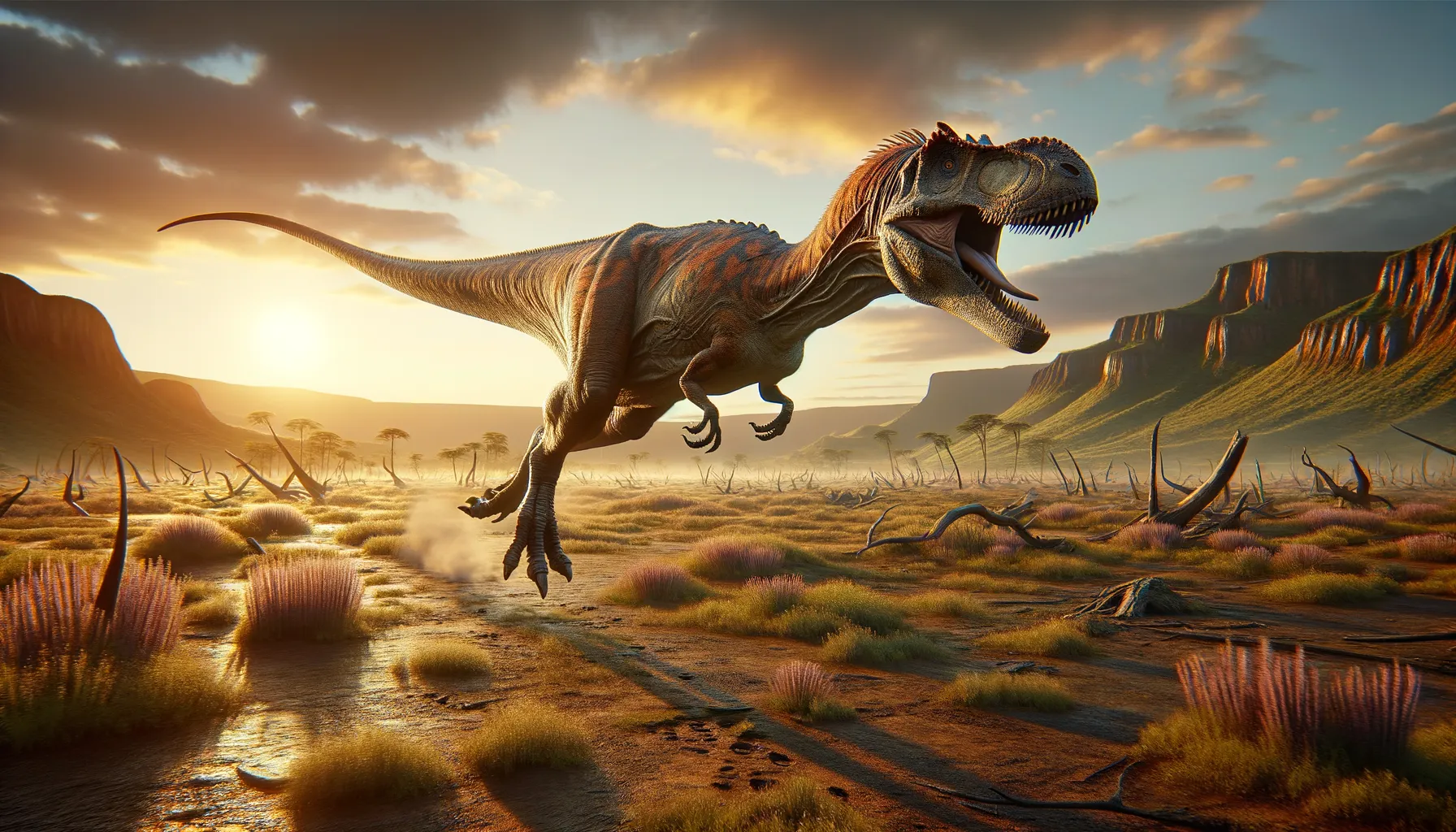
Megapnosaurus
Swift predator of the Jurassic plains!
Period
Jurassic
Length
About 2 meters (6.6 feet) long.
Height
Approximately 1 meter (3.3 feet) tall.
Weight
Roughly 15 kg (33 lbs).
Megapnosaurus was a small, agile theropod dinosaur that lived during the Early Jurassic period. Known for its speed and agility, this dinosaur is a fascinating example of early predatory dinos. Its fossil discoveries primarily in Africa and North America have provided valuable insights into its behavior and environment. Evolving over millions of years, it played a crucial role in the food web as an effective hunter of small prey.
Diet
Megapnosaurus was a carnivorous dinosaur, primarily feeding on small animals, insects, and perhaps scavenging when necessary. Its sharp teeth and agile build allowed it to hunt effectively.
Hunting
It relied on its speed and agility to catch prey, likely using the element of surprise. Megapnosaurus may have hunted alone or in small groups, targeting insects and small vertebrates.
Environmental challenges
Living during the Early Jurassic, environmental challenges included climate fluctuations and competition for resources. The changing landscape required adaptability, influencing its behavior and diet. Geological events could also disrupt habitats, forcing migration or adaptation.
Speed
Fast runner for short distances.
Lifespan
Estimated to be around 10-12 years.
First discovery
First discovered in Zimbabwe in 1963.
Fun Facts
- Megapnosaurus means 'big dead lizard' which reflects its status as a fossil.
- This dinosaur was about the size of a small dog, making it a relatively tiny predator.
- Megapnosaurus lived during the Early Jurassic period, around 200 million years ago.
- Fossils of Megapnosaurus have been found in Southern Africa, indicating it roamed this region.
- It is believed that Megapnosaurus hunted in packs, improving its ability to catch prey.
- Megapnosaurus was a theropod, which means it was a bipedal carnivore.
- Originally named 'Syntarsus,' it was renamed 'Megapnosaurus' in 2001 due to the prior name being used for a beetle.
Growth and Development
Megapnosaurus grew rapidly during its juvenile stages, reaching maturity quickly to increase survival chances. It likely had a similar growth rate to modern reptiles, with periods of rapid growth interspersed with slower phases. The early development was crucial for avoiding predation.
Habitat
This dinosaur inhabited semi-arid environments with sparse vegetation, suitable for its hunting style. It roamed the open plains and forested regions of what is now Africa. The varied habitat offered diverse resources, ensuring survival in harsh conditions.
Interaction with other species
Megapnosaurus interacted with other species mainly as a predator or scavenger. It competed with other carnivores for food, but its agility gave it an edge. Occasionally, it might have been prey to larger dinosaurs or fallen victim to group hunting tactics.
Natural lifespan
Its natural lifespan was likely around 10 to 12 years.
Reproduction
This dinosaur likely laid eggs, as inferred from similar species. Its reproductive strategy involved nesting in secluded areas to protect eggs from predators. Parental care, if any, was minimal, with hatchlings being relatively independent.
Social behaviour
Megapnosaurus exhibited some degree of social behavior, possibly hunting in small packs. This cooperative behavior increased hunting success rates. However, its solitary nature was more pronounced during non-hunting periods.
Fossil locations
Fossil remains of Megapnosaurus have been found primarily in Zimbabwe and the southwestern United States. These discoveries have provided key insights into its distribution and adaptation. The wide range of fossil locations suggests a highly adaptable species.
